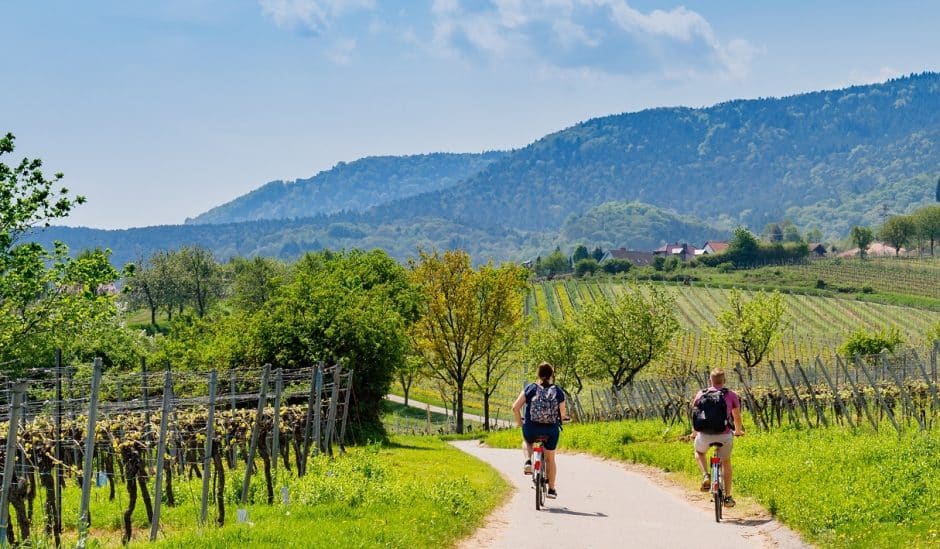A step-by-step guide for regions to create a transformative climate adaptation plan

European regions are grappling with climate change. Across the whole continent, heat waves and floods are on the rise. In Southern Europe, Catalonia has declared a drought emergency. In Northern Europe, coastal areas are getting pummelled by winter storms. The disastrous consequences for virtually all sectors, from agriculture to public health, mean that regions feel the need for robust adaptation plans that address climate change from a systemic perspective. But what does such a plan look like, and how can regional and local authorities develop one?
The Regional Resilience Journey: a transformative roadmap to becoming climate-ready
Climate KIC is helping mainstream systemic innovation in Europe by leading two flagship EU Missions programmes: Pathways2Resilience for regional climate adaptation and NetZeroCities for emissions reduction in urban areas.
Pathways2Resilience has developed the Regional Resilience Journey, a tailored methodology providing step-by-step guidance, training, tools and resources that allow local authorities to either produce their first climate resilience plans, or improve existing ones by integrating a systemic approach, just transition principles and transformative innovation. By applying to the programme, regions can receive support in implementing this methodology, with direct funding of up to €210,000.
The Regional Resilience Journey draws on both Climate KIC’s and its partners’ expertise in systems innovation, integrating elements from tested programmes like the Deep Demonstration in Glasgow and EU models like the European Environmental Agency’s Regional Adaptation Support Tool (RAST).
“The novelty, and effectiveness, of the Regional Resilience Journey is that it extends beyond the incremental nature of the RAST,” explains Thomas Koetz, Senior Advisor for Climate Resilient Regions at Climate KIC and new project lead of Pathways2Resilience. “To help regions not just withstand but flourish in their future climates, we have incorporated steps and processes that introduce a transformative dimension, acknowledging the complexity of systemic change. And to integrate adaptation and mitigation efforts, we have deliberately aligned with the Climate Transition Map used by NetZeroCities.”
A three-step journey: prepare the ground, build the vision, design pathways
Let’s say you’re one of the 100 regional authorities selected by Pathways2Resilience through its two open calls. Before you begin the Regional Resilience Journey, you need to establish which ‘enabling conditions’ will be crucial to your success. These may include securing finance, gathering robust data, setting up governance structures, and generally ensuring widespread commitment and collaboration from local communities and groups.
It is fundamental to map these at the outset, and further develop and strengthen them throughout your journey. They will make all the difference between ‘simply’ adapting to the changing climate and proactively shaping a resilient system capable of withstanding challenges far into the future (including those you cannot foresee).
“It’s important to note that the Regional Resilience Journey is not meant as a linear progression,” says Koetz. “Rather, it is a multi-layered, iterative process: you can enter the journey at any point, depending on your ‘resilience maturity’ level, and you can undergo parts or all of it multiple times, learning and improving as you go.”
You can draw on the wealth of resources and training provided by Pathways2Resilience to prepare your climate adaptation strategy:
1) Step one: prepare the ground
First, you need to understand what’s already being done, who are the key actors and institutions you need to involve, and what actions will support long-term results (for example, upskilling and reskilling programmes).
You also need to assess your climate risks and opportunities for prosperity. For instance, in their 2022 Law on Climate Change and Energy Transition, the Canary Islands identified water scarcity and land use change, coupled with lack of quality data, as key priorities and barriers to address when building climate resilience.
At the end of this phase, you will have a comprehensive baseline covering, among others, risk assessments, adaptive capacity needs, a stakeholder map and a monitoring framework that will act as a solid foundation for your plan.
2) Step two: build the vision
Now it’s time to mobilise your local community and key groups, to build a shared vision that integrates different perspectives and just transition principles that everyone feels committed to. This will set the destination of your journey as well as roles and accountabilities.
Some communities have already embedded this collaborative approach. The Glasgow City Council’s new project Creative Climate Futures brings organisations and local residents in two of its most vulnerable neighbourhoods together with decision-makers, technical experts and artists to shape the climate-resilient future they want.
When wrapping up this phase, you will have a draft strategy comprising a vision, an evidence-based outline of actions that will lead to the desired changes, and collaborative governance mechanisms underpinning this process.
3) Step three: design pathways
You’ve now come to the last step: define actionable pathways towards transformative climate adaptation. What’s key at this stage is to ensure your planned interventions follow a ‘portfolio’ approach. In other words, you need to include sufficient options that can complement and reinforce each other – to mitigate risks, to experiment and test, and to withstand uncertainty.
These coordinated interventions should also foster innovation by integrating research, new technologies, and collaboration across sectors and administrative departments.
As an example of addressing interlinked challenges around extreme temperatures, biodiversity loss, and rural livelihoods, the Castilla y Leon region in Spain is exploring a range of nature-based solutions around water management, climate-proofing of public infrastructure, sustainable land use and food production, and renewable energy deployment.
Systemic innovation in practice: designing a portfolio of actions deeply rooted in the local context
“Climate KIC’s methodologies for systemic innovation in specific places, from Deep Demonstrations to the Regional Resilience Journey and Living Labs, put at the centre the vision and concerns of local community and groups,” explains Koetz. “Taking into account a wide range of perspectives from the outset allows us to address root causes of problems. The next step is designing a portfolio of interventions that push forward innovation and are firmly grounded in the local context. With this approach, our programmes aim to contribute to more effective investments and planning towards just, inclusive climate resilience.”
Climate KIC has been implementing large-scale demonstration programmes in Ireland, Slovenia, Spain and Greece, and is helping to shape ‘Living Labs’ through a third EU Mission on healthy soils – places to experiment with solutions for urban and rural challenges in real-life conditions, together with farmers, industrial sites, citizens and local authorities.
End of the journey: a solid foundation for implementing your resilience plan
Now you have a climate resilience action plan ready to be put into practice, outlining multiple pathways, each with its own portfolio of interventions, investment plans to finance them, expected outcomes across environmental, social and economic indicators, and timelines for evaluation and adjustment. And you did all this alongside 100 other European regions, learning from each other.
Does this sound like a challenge your region would like to take on? Apply to the Pathways2Resilience open call by 20 August 2025 and chart your Regional Resilience Journey with us.


